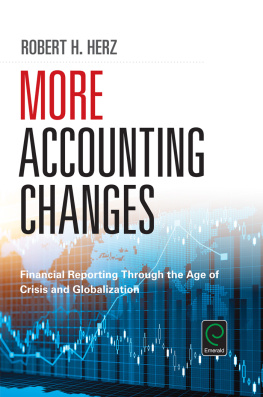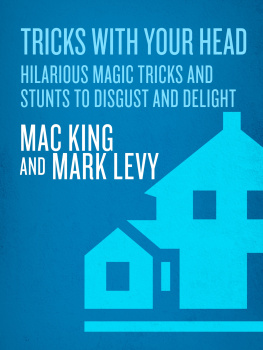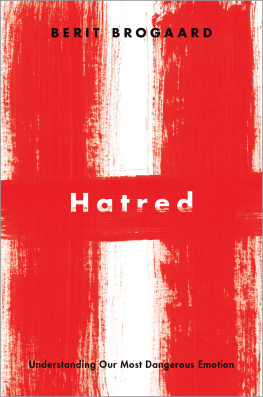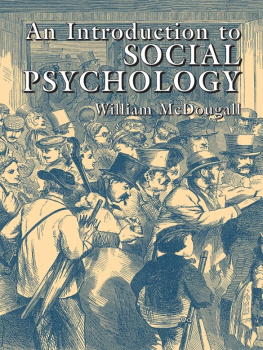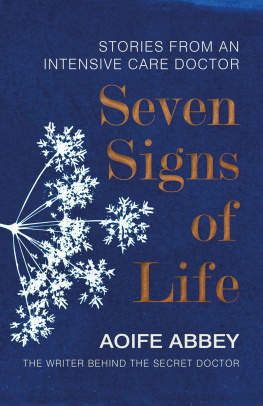ALSO BY RACHEL HERZ
Th e Scent of Desire

FOR LARRY
CONTENTS
Preface
My fascination with disgust was ignited in the spring of 1995 in a seminar led by Paul Rozin, the father of disgust in psychology, at the University of Pennsylvania. At the time, I was a new faculty member at the Monell Chemical Senses Center, an institute dedicated to the senses of smell and taste which was located around the corner from Pauls lab. Preoccupied with the immediacies of my own research career on odor and emotional memory, I didnt pursue any of the fascinating tidbits that I heard from Paul at that time, but they percolated quietly in the back of my mind. Fast-forward thirteen yearsand a confession that my first inclination to write a book about disgust began as a joke.
In March 2008 I was invited to be the celebrity judge for the National Rotten Sneakers Contest in Montpelier, Vermont, an annual contest held since 1975 thats notable enough to be listed in the Farmers Almanac . I was told that my job would be to sniff the sneakers of kids from around the country who had already won their regional odoriferous challenges. Th e finalists, aged six to sixteen, would now be competing for recognition as having the stinkiest footwear of them all. In addition to a cash prize, the winner has their sneakers enshrined forever in a glass cabinet dubbed Th e Hall of Fumes. Th e contest included other judges whose jobs were to look at various components of the shoes exteriorlaces, grommets, solesin order to rate how rotten they were. But only two of us had to get up-close and nose-personal. Before I left for Vermont, many of my friends cajoled me with questions: How will you be able to stand it? How could you have agreed to such a thing? Wont it be just too disgusting? I started to joke with them that I was doing it as research for the sequel to the book I had just written, Th e Scent of Desire , and that now I was going to write Th e Scent of Disgust. Th is is not quite what happened.
Th e stench of the sneakers, though far from mild, wasnt nearly as bad as I thought it would be. Ive even been the nose judge in the years since and have agreed to be on-sniff for as long as the contest organizers may want me. Why wasnt it so bad? Th e answer in part was because I had psyched myself up to believe that it would be excruciating, and the reality was weak by comparison. Th e fact that my thoughts enabled me to tolerate those mephitic sneakers made me realize that our mind has a very powerful influence on our perception and experience of disgust. And this got me thinking more. I started to read papers and books and go to scientific conferences all starring the emotion of disgust and what I discovered is that disgust is incredibly fascinating and complexand not yet fully understood.
I am a research psychologist who has been studying emotion, perceptioncognition, and especially the sense of smell since 1990. I have always had a particular fascination with disgust, partly because it shares many commonalities with the sense of smell. Th ey are both biologically based, but enormously influenced by learning, context, and complex thought. However, I did not begin to study disgust in earnest until 2008. In the time since then, I have researched, thought about, experimented on, and written about disgust nearly continuously.
Over the past few years, I have been taken on an exploratory odyssey like no other. I have learned that the emotion of disgust is universal, but it is not innate. I have learned that disgust is many things to many people at different times and in different places; and that it is shaped by our situation, culture, and personal history. I have learned that disgust is uniquely complex among human emotions. And I have learned much more. Coming to the topic of disgust as a relative newcomer, I believe that I have the same basic questions and curiosity that you will have about it, and my scientific background and training have enabled me to decipher many of the mysteries of disgust and arrive at some novel conclusions.
Th is book not only explores what disgust is, but also how, where, and why it is elicited psychologically and neurologically, what its dark sides are, our perverse attraction to it, and its consequences for us as individuals and for our society. Drawing on scientific experiments, news headlines, experiences from my own life, and the stories of others, I will unearth a host of thought-provoking facts: for example, that there are specific rotted foods that every culture, including ours, considers a delicacy; that homosexuality is at once practiced and punished by death in the same country; and that women dislike foreigners more when they are pregnant. You also might be surprised to learn that some people cant experience disgust, that incest and cannibalism are upheld in some traditions as part of the privileges of royalty or the rites of religion, that publically relieving yourself in the dining room was once perfectly normal, and that necrophilia is not a crime in many American states. You will also discover how politicians can use disgust to win votes, how disgust can be managed in the courtroom to influence sentencing, and how it can be manipulated to incite genocide. You will find out how, when, and why things that we find disgusting can also be very amusing. You may be tickled or shocked to learn that depending on where you live, the same depictions of porn are either vomitously repulsive or erotic entertainment. You will learn what things are especially disgusting to you and how generally stoic or squeamish you are compared to others.
Disgust teaches us about the inner workings of our brains and personality. It illuminates why we have certain reactions to groups of people and why we treat various individuals the way we do, for both better and worse. Disgust informs us about our culture, our food preferences, our sexual passions, our laws, and our customs. Most importantly, disgust reveals the fundamental concerns that underlie our existence. Indeed, by deciphering disgust we come to more fully understand what it means to be human. I hope you enjoy the journey as we unravel all Th ats Disgusting.
Chapter 1


LETS EAT
Th e alarm sang its 7 a.m. tune, and Akiko awoke feeling refreshed but hungry. Shed had a tiny dinner the night before and was ravenous. Moments later Akiko was in the kitchen, opening the refrigerator and pulling out a carton of natt. Mmm, this will be good, she murmured as she eagerly dug her chopsticks into the sticky, slippery beans.
At the same time, on the other side of the globe, Mia was opening a bottle of Cabernet and placing goat cheese-filled olives, fresh Stilton, and taleggio on a platter with grapes and crackers for the guests that would arrive soon. She hadnt eaten since lunch and the luscious cheesy treats were oh-so-tempting. She checked the clock again, sighed, and then succumbing to pleasure sliced off a soft, gooey wedge of taleggio.
Natt is a stringy (the strings can stretch up to four feet), sticky, slimy, chunky, fermented soybean dish that the Japanese love and regularly eat for breakfast. It can be eaten straight up, but is usually served cold over rice and seasoned with soy sauce, mustard, or wasabi and can also be garnished with green onion, fish flakes, raw eggs, or radish. Th e latest figures show that over 14 billion pounds of natt are produced annually for Japans population of 127.9 million people. Aside from its alien and complex texture, natt suffers from another problemodorat least for Westerners. To me, natt smells like the marriage of ammonia and a tire fire. Although this might not be the worst smell combination ever, it has zero food connotation, and there is not a Westerner I know of who at first attempt can get natt into their mouth.
Next page

